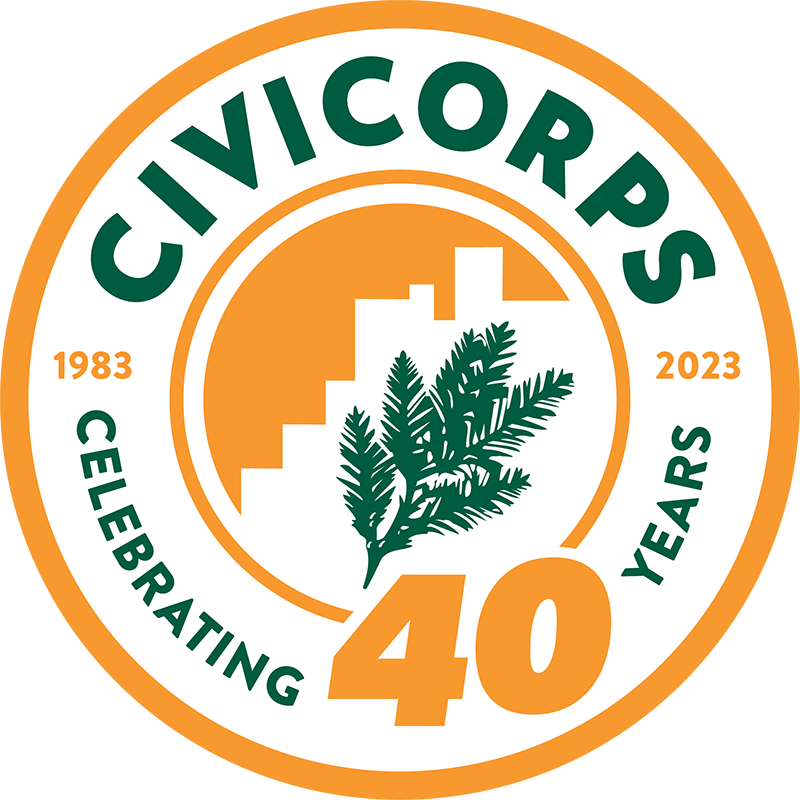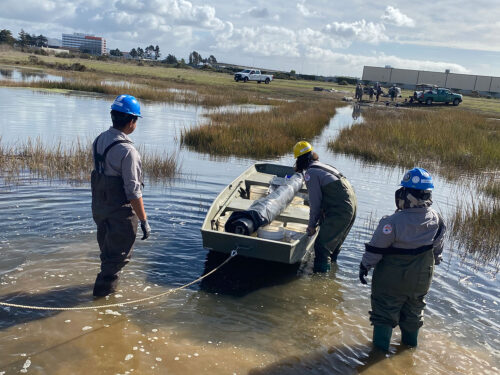
The wildland-urban interface is defined as the area where houses meet or intermingle with undeveloped wildland vegetation. In California, at least 25% of the state’s population live in the interface, making wildfire extremely destructive. Coupled with severe drought and an increasingly long wildfire season, the growth of the wildland-urban interface requires an ever greater effort to protect public and private property alike.
Through EBRPD, Corpsmembers have opportunities to perform an array of land management work. We also contract with EBMUD to perform fire fuel and vegetation management services at designated locations throughout the municipal utility district, where we provide weed, brush and litter abatement. The most critical part of this work includes mitigation along the East Bay hills on the entire coastal ridge, clearing dry vegetation and helping to protect the region from a devastating wildfire. The work requires the attention to detail and work ethic that Civicorps crews are known for.
Working along the ridgetop, we are protecting an estimated 2 million people.
Mobile Tent Crew aka “Spikes”
Our Corpsmembers have participated in special projects with the California Conservation Corps in partnership with Cal Fire. For example, in September 2019, we sent a crew to Stanislaus National Forest and Yosemite National Park for an eight day “spike”, or mobile tent crew, to plant vegetation and reduce fuel load. After the devastating Rim Fire of 2013, this area was designated a high priority for reforestation and rehabilitation. Overall, our crew of five Corpsmembers and one Supervisor covered over 30 acres, clearing the areas around conifer seedlings scattered across that spread of land. They also thinned the forest to promote its health. Our crew felled around 10-15 trees each day, bucking up the trees, creating 6 burn piles altogether, and then clearing out vegetation and brush around the burn piles so they could be burned safely. Reforestation projects like this Spike are critically important to build forest resilience and maximize carbon sequestration in preparation for the next fire.
Invasive Species reduction
Reduction of invasive plants is a critically important component of our fire mitigation work. Invasive plants often increase the frequency of fires by providing more continuous fuels that are easier to ignite. After fires, these weedy invaders typically re-establish more rapidly than native plants, suppressing the recovery of the natives and allowing the weeds to expand their range.
Since 2019, we’ve partnered with Cal-IPC (California Invasive Plant Council) to provide training for our Corpsmembers on botany, ecology and invasive plant management. “This is part of our commitment to growing and broadening the ecological workforce,” says Cal-IPC Executive Director Doug Johnson. “Not all of the youth who attend the trainings will go on to work in environmental restoration, but the increased awareness of green jobs and environmental issues is important for everyone’s growth, and contributes to improved outcomes for local youth.”
At Black Diamond Mines Regional Park we focus on removal of Tree of Heaven. Across the parks system, we engage in removal of Scotch Broom, Himalayan Ivy and Eucalytus. Along our waterways we remove Ice plants.
In a typical year our Conservation Crews clear close to 30 acres of land from invasive species.
If we’re going to get serious about climate change, we need a climate army and the California local conservation corps are perfectly positioned to step in.
 Bob Doyleimmediate past General Manager of EBRPD
Bob Doyleimmediate past General Manager of EBRPD




